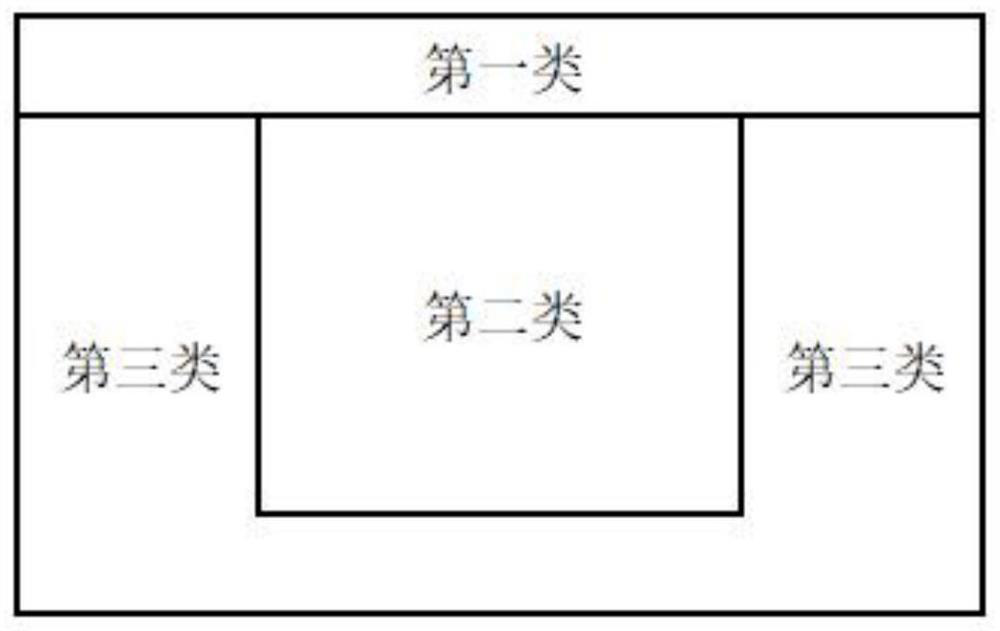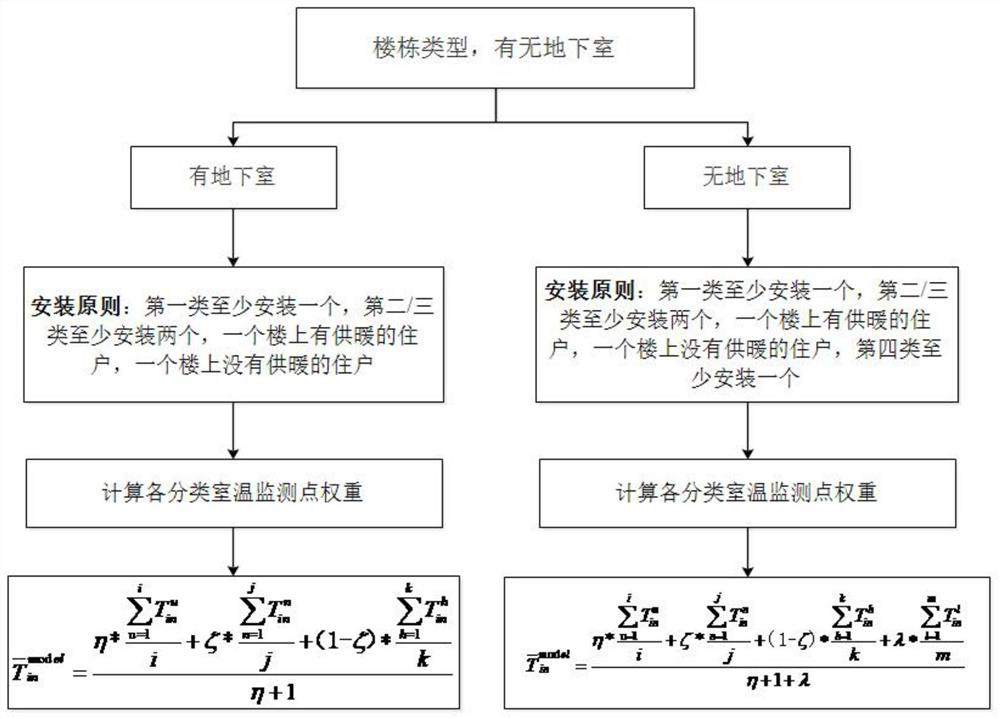Comprehensive indoor temperature calculation method based on building user classification
A technology of indoor temperature and calculation method, which is applied in the direction of temperature measurement, application, household heating, etc. of moving fluid
- Summary
- Abstract
- Description
- Claims
- Application Information
AI Technical Summary
Problems solved by technology
Method used
Image
Examples
Embodiment 1
[0034] Such as figure 1 with image 3 , the installation principles and calculation methods of typical room temperature monitoring points in buildings without basements;
[0035] (1) Divide all households in the building into three categories, the first category includes the top floor households, the second category includes the middle households, and the third category includes the left, right and bottom households;
[0036] (2) The first type of households should install at least one room temperature monitoring point, the second type of households should install at least two room temperature monitoring points, one monitoring point has heating for the upstairs residents, and the other upstairs residents have no heating, and the third type of residents should install at least two At room temperature monitoring points, one monitoring point provides heating for upstairs residents, while the other upstairs does not provide heating. A total of at least 5 monitoring points should ...
Embodiment 2
[0042] Such as figure 2 with image 3 , there are installation principles and calculation methods for typical room temperature monitoring points in basement buildings:
[0043] (1) Divide the building households into four categories, the first category includes the top floor households, the second category includes the middle households, the third category includes the left and right edge households, and the fourth category includes the bottom floor households;
[0044] (2) The first type of households should install at least one room temperature monitoring point, the second type of households should install at least two room temperature monitoring points, one monitoring point has heating for the upstairs residents, and the other upstairs residents have no heating; the third type of residents should install at least two One room temperature monitoring point, the upstairs residents of one monitoring point have heating, and the other upstairs residents have no heating; the fou...
Embodiment 3
[0050] A heat exchange station serves residential buildings with high floors. In order to ensure the safe and stable operation of the system, it is divided into high and low areas. Among them, floors 13 and above are high areas, and floors below are low areas. There is no basement. Indoor temperature measuring points are randomly installed in each district. The communication signal of the temperature measuring points in the high area is not good, which leads to the low efficiency of room temperature point collection. A total of 6 room temperature monitoring points are online normally, and 27 points in the low area are normally online.
[0051] In December, the supply and return water temperatures in the high and low areas are basically equal. According to experience, it can be considered that the heating effects in the high and low areas are basically equal, that is, there is not much difference in the comprehensive room temperature. See Table 1 for the average room temperatur...
PUM
 Login to View More
Login to View More Abstract
Description
Claims
Application Information
 Login to View More
Login to View More - R&D
- Intellectual Property
- Life Sciences
- Materials
- Tech Scout
- Unparalleled Data Quality
- Higher Quality Content
- 60% Fewer Hallucinations
Browse by: Latest US Patents, China's latest patents, Technical Efficacy Thesaurus, Application Domain, Technology Topic, Popular Technical Reports.
© 2025 PatSnap. All rights reserved.Legal|Privacy policy|Modern Slavery Act Transparency Statement|Sitemap|About US| Contact US: help@patsnap.com



